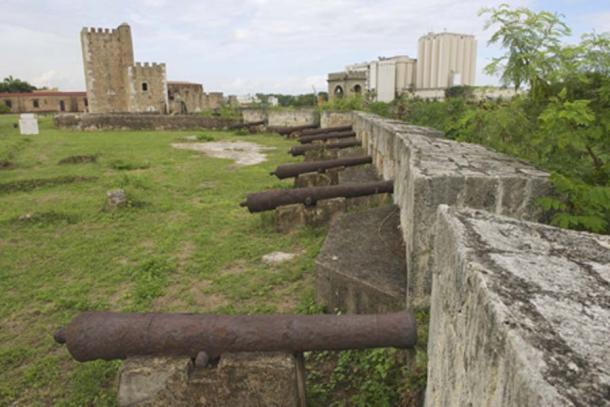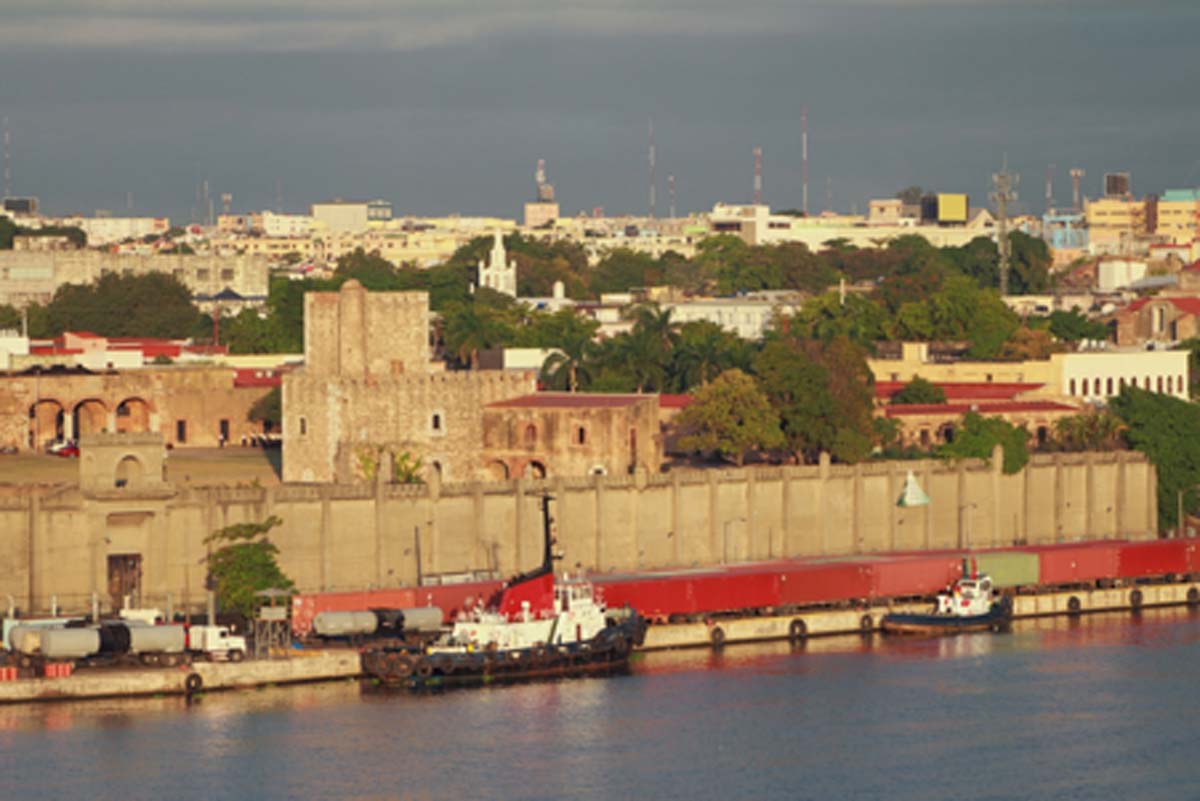Fortaleza Ozama, Where Columbus Was Imprisoned for Being a Tyrant
The language and culture of many of the Caribbean islands reflects four centuries of Spain’s presence in the region. They also left a remarkable legacy of colonial-era buildings and one of the most historically significant in the history of the Dominican Republic and the Caribbean is the Fortaleza Ozama (Ozama Fortress). The fortress was built by the Spanish in 1502 and is thought to be the oldest example of European military architecture in the Americas.
The Bloody History of Fortaleza Ozama
Built as a defense against pirates as well as to intimidate the native Taino people and the many African slaves, Fortaleza Ozama soon became a symbol of Spanish authority in the Caribbean.
The fortress was the center of Spanish colonial government on Santo Domingo and was the official residence of the Spanish viceroy. The most famous viceroy, Christopher Columbus, was such a tyrant that he was eventually imprisoned in the fortress.
The fort was occupied by the French when Spain ceded the colony to them and was later occupied twice by the Haitian army. This army of former slaves had expelled their French overlords and became such a military force that they even conquered the territory of what is today the Dominican Republic.
- Forgotten, Lost, or Destroyed? Exploring the Final Fate of the Famous Three Ships Led by Columbus
- Jaisalmer Fort: The Imposing Desert Fort With a Bone-Chilling Custom
- Warangal Fort: More Spiritual Haven than Safe Haven

Fortaleza Ozama exterior (evannovostro/ Adobe Stock)
The 19 th and early 20 th century saw instability in the Republic and eventually American marines occupied the island, many being stationed in the fortress in the 1920s and again in the 1960s.
In 1930 the dictator Rafael Trujillo seized power and reign for 30 terror filled years. The Fortaleza Ozama was used as a detention center for political prisoners who were often viciously tortured.
Today the castle has been converted into a tourist attraction and is one of the best-known landmarks in the Dominican Republic. In 1990, UNESCO declared it to be a World Heritage Site along with a number of other nearby landmarks in Santo Domingo.
The Remarkable Architecture of Fortaleza Ozama
Fortaleza Ozama is adjacent to River Ozama, after which it was named. This fort is accessed by a set of gates that date from the 18 th century and still bear the traces of bullet holes left by American soldiers in 1965.
A statue of Gonzalo Fernández de Oviedo y Valdés, a former governor of the site as well as a historian and writer, occupies the interior garden.
The oldest part of the fortress is the distinctive tower topped by battlements, which was built in a typical European 15 th century style. The openings enabled archers to fire down at attackers. The towers known as the tower of homage are over feet high (18m) tall and were once the tallest building in all of the Americas.

Old cannons of the fort (Dmitry Chulov/ Adobe Stock)
To the side of this building is another round fortification which was used to defend a weak spot in the fortress. In the 17 th century a number of shooting platforms were added built to hold cannons and the main defensive fort was built. A courtyard, which is surrounded by a series of buildings, were used by the garrison.
The fortress is made from coral stone dragged from the sea and the walls of the Fortaleza Ozama are nearly 10 feet thick (3 m) thick - impenetrable to any artillery until the late 18 th century. This was one of the main reasons why the fortress was never taken by an enemy.
Exploring Fortaleza Ozama
The fort is in the historic district of Santo Domingo known as the Ciudad Colonial and is very popular with tourists. There is plenty of accommodation near the fort. The fort can be visited at opening hours and tour guides are available. It is possible to climb the tower of homage which offers a great view of the city and the breath-taking scenery.
Top image: Fortaleza Ozama, Santo Domingo Source: photobeginner/ Adobe Stock
By Ed Whelan
References
Deagan, K. (2010). Strategies Of Adjustment: Spanish Defense Of The Circum-Caribbean Colonies, 1493–1600. In First Forts (pp. 17-39). BRILL
Available at: https://brill.com/view/book/edcoll/9789004187320/Bej.9789004187542.i-278_004.xml
Found, W. C. (2004). Historic sites, material culture, and tourism in the Caribbean islands. In Tourism in the Caribbean (pp. 152-167). Routledge
Available at: https://www.taylorfrancis.com/books/e/9780203402696/chapters/10.4324/9780203402696-14
Roorda, E. (1998). T he dictator next door: The good neighbor policy and the Trujillo regime in the Dominican Republic, 1930-1945. Duke University Press



















